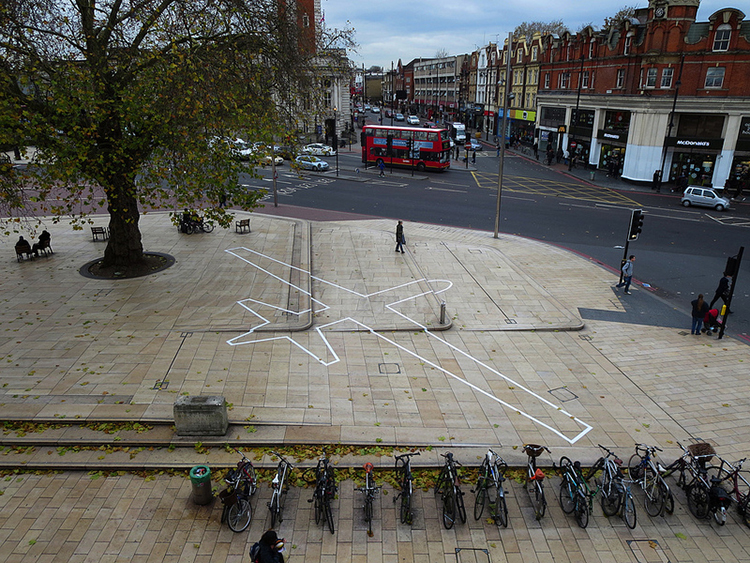Chalk drawings of drone outlines resembling murder scenes have been popping up around the world, from London to Washington, D.C. to Istanbul. These large-scale, 1:1 representations of unmanned aerial vehicles first appeared in London in January 2012 as James Bridle’s “Drone Shadows” art installation.
The installation, designed to help people become more aware of the world around them, has a handbook giving basic instructions for anyone interested in creating a Drone Shadow. Bridle hopes the project will counter lack of disclosure from the government about drone operations.
Drones, or UAVs (unmanned aerial vehicles), are aircrafts controlled not by a human pilot aboard, but by onboard computers or a remote control. Drones are used in wars and covert operations worldwide by many countries, in surveillance, fighting, assassinations, policing, and in deterring migrants. According to the Drone Shadows handbook, “[drones] are becoming ubiquitous, yet remain almost invisible.”
One of Bridle’s “Drone Shadows.” From Fast Co. Exist.
Last year, for the first time publicly, FBI Director Robert Mueller admitted that the United States uses drones for surveillance in law enforcement situations on domestic soil. Mueller’s admission sparked controversy, especially among U.S. senators wanting to know more about the government’s use of UAVs.
California Democratic Senator Dianne Feinstein expressed concern about the privacy implications of drone surveillance. “The greatest threat to the privacy of Americans is the drone and the use of the drone, and the very few regulations that are on it today,” Feinstein said.
Mueller countered, “It is very narrowly focused on particularized cases and particularized needs.”
According to a 2013 poll by Fairleigh Dickinson University, a wide six-to-one margin (75 percent versus 13 percent) of those polled approve of the U.S. military using UAVs to carry out attacks abroad “on people and other targets deemed a threat to the U.S.” But just 24 percent of American voters said they think it’s legal for the U.S. government to target its own citizens living abroad with drone attacks.
Currently, Americans have little legal protection from aerial surveillance conducted by drones, which has resulted in calls from civil liberties advocacy groups for the government to establish privacy regulations and greater transparency involving drone surveillance.
Government transparency regarding drone operations may not come any time soon, but with projects such as Bridle’s “Drone Shadows” gaining attention and the public becoming more aware of this issue, this conversation is nowhere near over.
